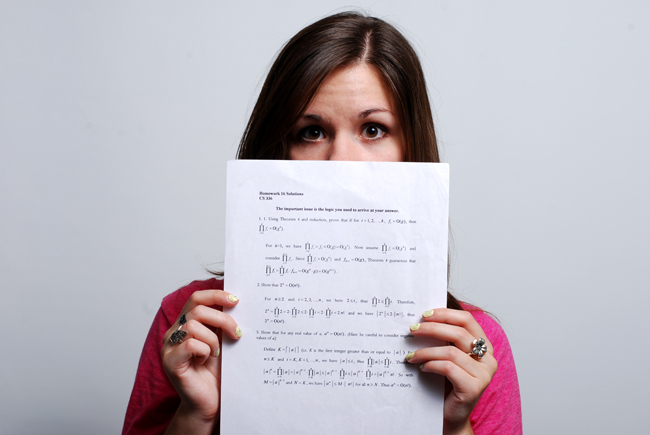Math teachers may rate white female students as less capable than white male students regardless of test scores, according to new UT research.
A recent study co-authored by assistant professor Catherine Riegle-Crumb and doctoral student Melissa Humphries has found that math teachers are likely to be biased against white female students.
Crumb and Humphries’ study found that when asked about their students’ math skills, teachers rate their white female students lower then their white male students even when their grades and test scores are equivalent. Humphries said teachers were asked if the class was too difficult, the appropriate level or too easy for a student.
“There is a lot of research that looks at this, especially focusing on younger grades, and they tend to find that there are often biases against girls in math,” Humphries said. “But what is surprising is we are looking at high school sophomores, so even at this level we did find that there was still possibly some bias.”
Ellen Cameron has always been good at math, receiving the AB calculus award her senior year of high school as well as the respect of past teachers. Despite this, Cameron, a Plan II and business junior, said she felt some teachers were biased against her as a female.
“It was the science teachers that I feel like were slightly discriminatory if anything,” Cameron said. “I feel like people group math and science together a lot.”
The study came from a data set of 15,000 high school sophomores, collected by the Education Longitudinal Study of 2002. Humphries said according to their study, white girls were about 40 percent less likely to be perceived as being in a class too easy for them and 33 percent more likely to be perceived as being in too difficult of a class.
Humphries said she and Crumb also considered what kind of difference the level of math students would make on teacher’s ratings.
“In some ways you might think if someone gets to an advanced math class, you already know they’re pretty good at it,” Humphries said. “But we still see this idea that the class just isn’t as easy for the white girls in the class as the white boys.”
Tamara Hudgins, executive director of Girlstart, a nonprofit whose goal is to empower girls in science, technology, engineering and math, said these results did not surprise her.
“I believe that while the effort to be inclusive in educational environments has been of interest of late, it is still too recent to have had much of a trickle-down effect at the schools,” Hudgins said. “Programs like UTeach at the University of Texas at Austin have a dedicated interest in equity and trying to remove bias from the classroom. But those efforts are fairly new.”
Hudgins said identifying biases like these is the first crucial step to ridding the education system of inequality.
“The more we ask this question about bias, the more opportunity we will have to subtly, but fundamentally, change systems,” Hudgins said. “Systematic change doesn’t happen over night, but it does happen when more people agree that something needs to be modified or improved.”
Leah Hudson, a computer science honors freshman, said she felt like she had experienced bias from her teachers in the past. She said a way to get rid of the bias would be for female students to raise their hand to answer questions in class, even if they were unsure of themselves.
Cameron, who works in a nursery, said she feels there is hope for the future generation.
“I get to watch the boys play with baby dolls and the girls play with the trucks,” Cameron said. “I think there is some optimism in that and it means gender norms are going to change in the future.”
Printed on Wednesday, April 18, 2012 as: Research finds biased math teachers





















